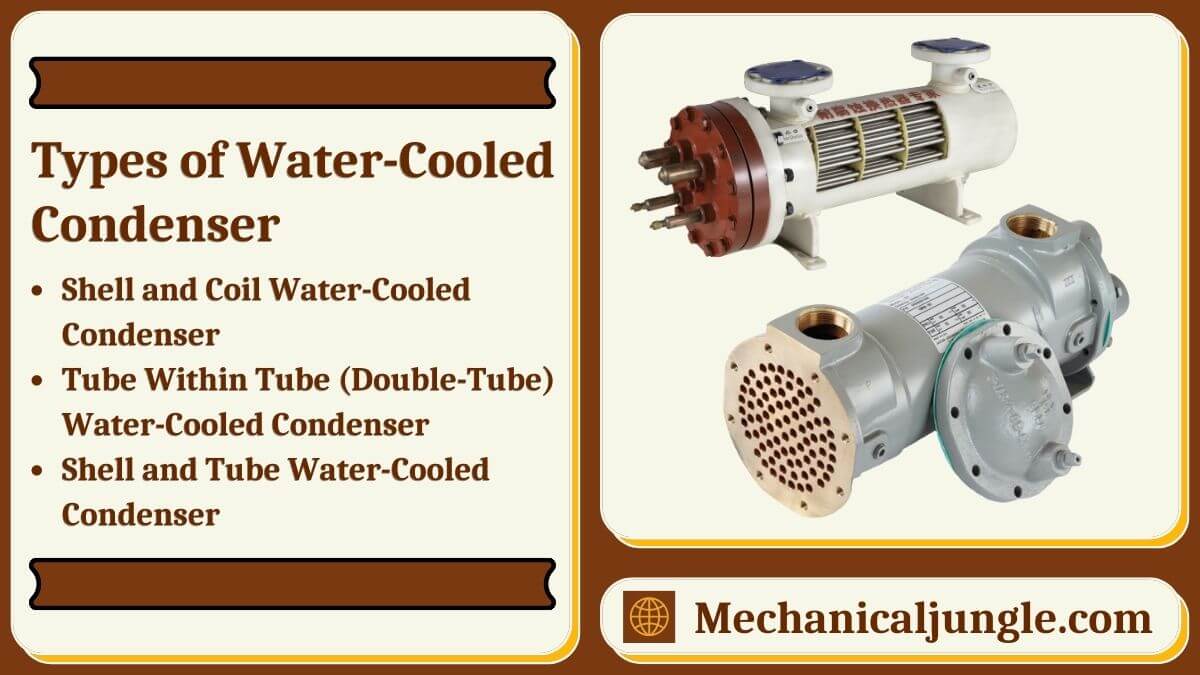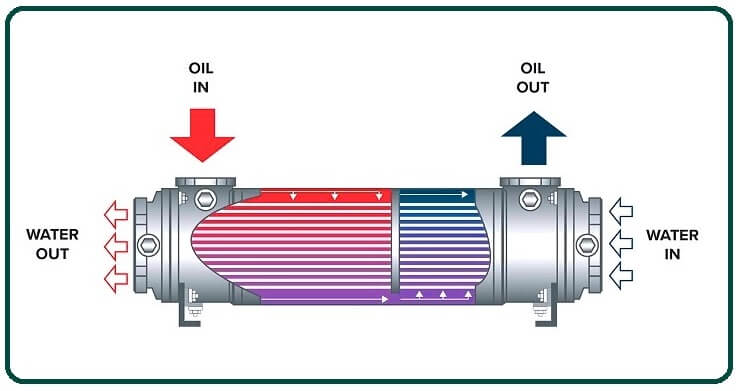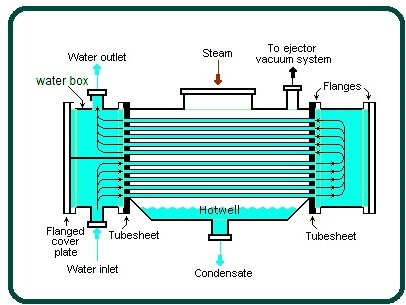
What Is a Water-Cooled Condenser?

It is a technical heat exchanger used to remove heat from the refrigerant vapor and transfer it to the water running inside the tube. Water-cooling systems have seen considerable use over the years, although they are also increasing in small businesses & some residential applications.
The system operates through networks of water coils that are used to transfer heat from the condenser coils. These systems usually work in conjunction with cooling towers to dissipate heat.
Water-cooled systems are often chosen because:
#1. They Operate at Better Efficiencies
Overall a water-cooled condenser unit will generally consume less overall energy, which can lead to savings on energy costs and consumption.
#2. Extended lifespan
Due to the efficiency of the medium and the lack of weather-exposed parts, a water-cooled system will typically last for years, assuming maintenance is not neglected.
#3. Can Operate Better at Higher Temperatures
Industries such as construction may find that water-chilled systems work more effectively in areas with higher temperatures.
How Does a Water-Cooled Condenser Work?
This type of condenser has been developed to transfer heat from the working fluid to the secondary fluid. Vapour normally enters the condenser at a temperature above the temperature of the secondary fluid.
When the vapor cools, it reaches saturation temperature, condenses into a liquid, and releases a large amount of latent heat; As a result, the vapor content decreases and the liquid volume increases; Whereas only liquid will remain at the outlet of the condenser.
Types of Water-Cooled Condenser
There are three basic types of commercials water-cooled condensers:
#1. Shell and Coil Water-Cooled Condenser
A shell condenser is a steel tank with a copper tube inserted into the shell. As water flows through tubings, it condenses the hot gases into a fluid, and the lower part of the shell receives the fluid.
Advantages of this type of separate condenser include the compact design and the elimination of fans. Since the coils are completely surrounded by steels shell, mechanical cleaning of such coils is nearly impossible.
#2. Tube Within Tube (Double-Tube) Water-Cooled Condenser
The second types of these condensers are double-tube. One tube is placed inside the other in such a way that the water flowing through the inner tube cools the refrigerant in the outer tube. This condenser can be constructed either in a cylindrical spiral or in a rectangular style.
#3. Shell and Tube Water-Cooled Condenser

Shell and tubes are the most common types of a condenser in large chemical processing plants. In this type of condenser, the number of straight water tubes is surrounded by a large cylindrical shell. The shell can be with or without fins.
Common materials for shells are steel and copper. Steels tubes are used in ammonia refrigerating systems because ammonia corrosives copper.
The grooved tube sheet is welded at both ends of the cylinder. The water tubes are extended to the groove of the tube sheet to achieve a vapor-tight fit. An intermediate support is provided to avoid bending of the water hose.
The removable water box is bolted to the tube sheet. This arrangement facilitates the cleaning of the condenser in the event of contamination. The hot refrigerant enters the topmost shell.
The refrigerant rejects the heat of the water when it comes into contact with the water tubes. Eventually, the condensed refrigerant sinks to the bottom of the shell.
Advantages of Water-Cooled Condenser:
- Where there is a restriction for an air-cooled condenser, a water-cooled condenser is an ideal replacement.
- The thermal energy used in other heating processes is recovery.
- This type of condenser can be placed indoors.
- A water-cooled system usually lasts for years, assuming maintenance is not neglected.
- Its heat transfer rate is high.
- It consumes very little overall energy, which can lead to savings on energy cost & consumption.
- It does not require any external power.
- Since water coolings are more efficient than air cooling, the time required for cooling is less.
- The length of the condenser pipe is reduced, thereby reducing the work of the compressor and thus increasing its efficiency.
- With the inclusion of these condensers, the net load of the system increases.
Disadvantages of Water-Cooled Condenser:
- Using water as a cooling medium can lead to corrosion problems.
- The use of water as a cooling medium can lead to a build-up of scales in the supply line.
- Due to the scarcity of freshwater around the world, few countries can afford to use wastewater.
- Using a water tank makes the system heavy, which results in problems during home use.
FAQs about Water-Cooled Condensers
What is a water-cooled condenser and how does it work?
A water-cooled condenser is a heat exchanger that transfers heat from refrigerant vapor to water running through tubes. As the vapor cools, it condenses into liquid, releasing latent heat.
What are the advantages of water-cooled condensers?
Water-cooled condensers operate more efficiently, have a longer lifespan, can handle higher temperatures effectively, and are suitable for indoor installations.
What are the types of water-cooled condensers?
The types include shell and coil condensers, tube within tube condensers (double-tube), and shell and tube condensers. Each design offers specific advantages depending on application needs.
What are the materials used in water-cooled condensers?
Common materials include steel and copper for shells and tubes. Steel tubes are used in ammonia systems due to ammonia’s corrosive nature towards copper.
What are the disadvantages of water-cooled condensers?
Disadvantages include potential corrosion issues, scale buildup in water lines, and the heavy weight of the system, which can pose challenges for residential use.
Where are water-cooled condensers typically used?
They are commonly found in large-scale industrial settings such as chemical plants, but are increasingly used in smaller commercial and residential applications where efficient cooling is critical.
How do water-cooled condensers compare to air-cooled condensers?
Water-cooled condensers generally offer higher efficiency and are suitable where air-cooled systems face restrictions, such as in high-temperature environments or where noise levels need to be minimized.
What maintenance is required for water-cooled condensers?
Regular maintenance includes cleaning to prevent scale buildup and inspecting for any signs of corrosion to ensure optimal performance and longevity.
Are water-cooled condensers environmentally friendly?
They can be more efficient in energy usage compared to air-cooled systems, but water consumption and potential environmental impact should be considered, especially in regions with water scarcity.
Can water-cooled condensers recover thermal energy?
Yes, they can potentially recover thermal energy for other heating processes, adding to their overall efficiency and cost-effectiveness.

